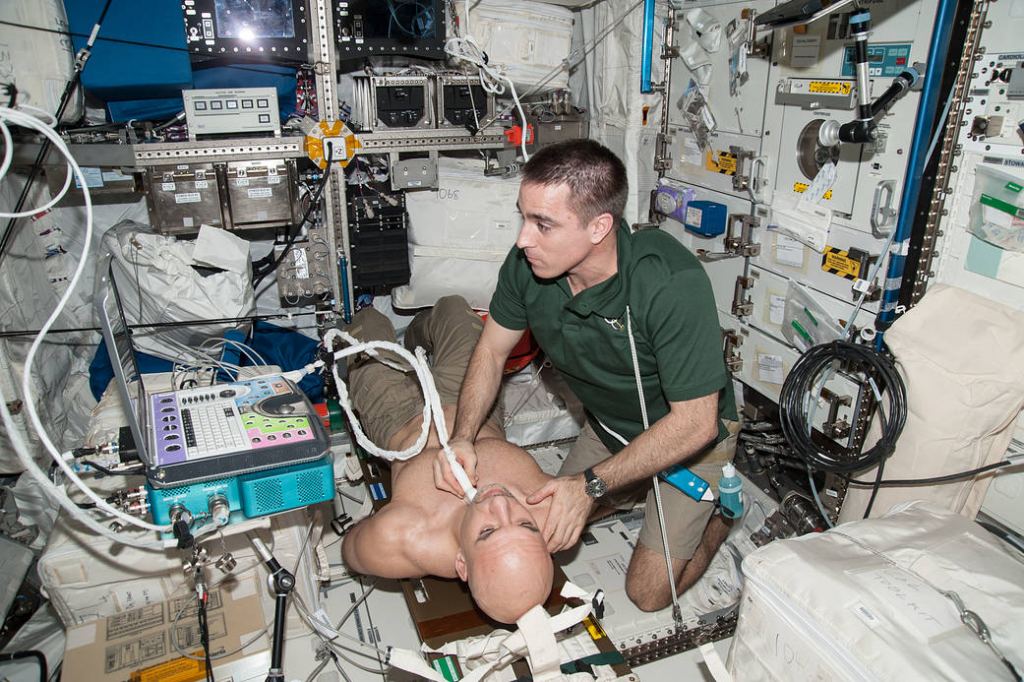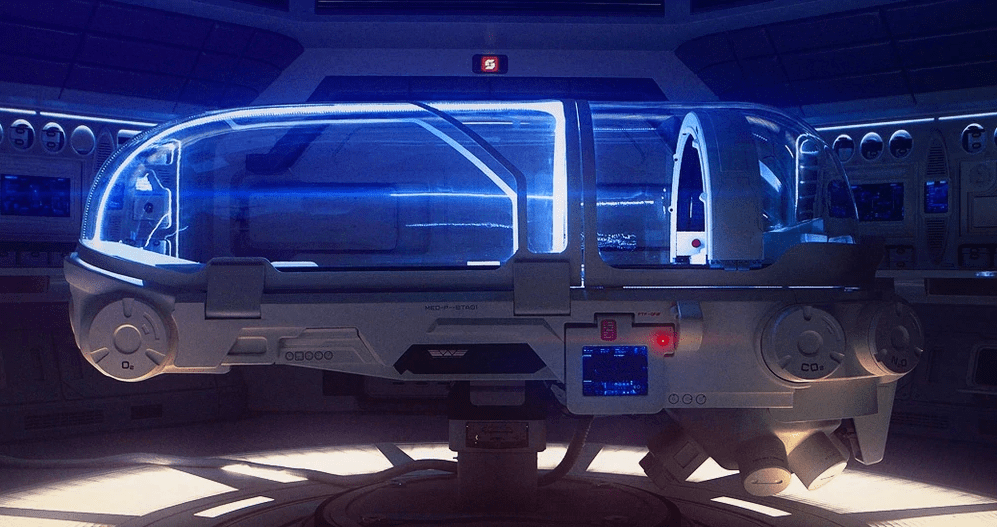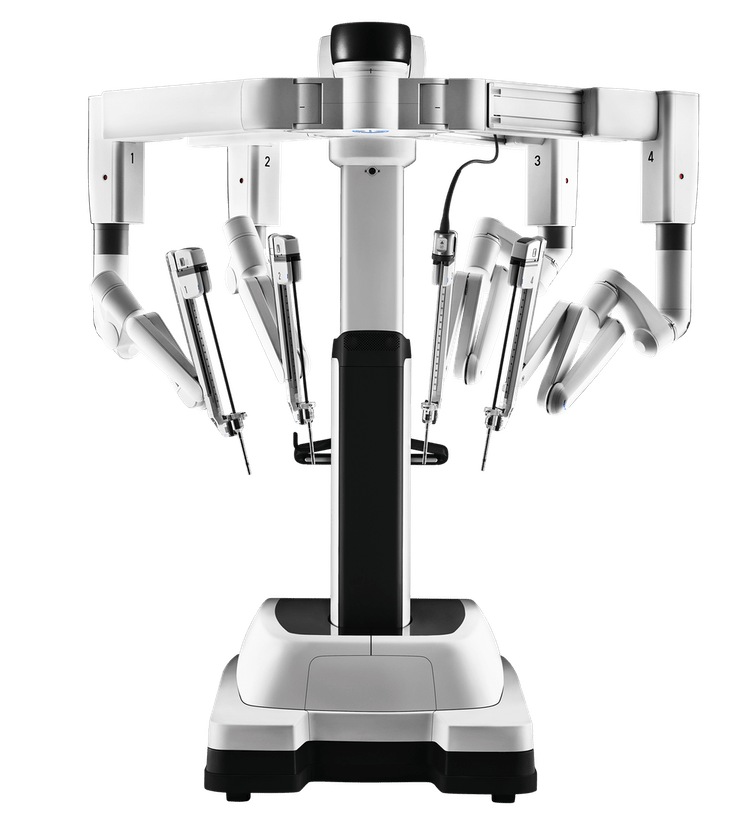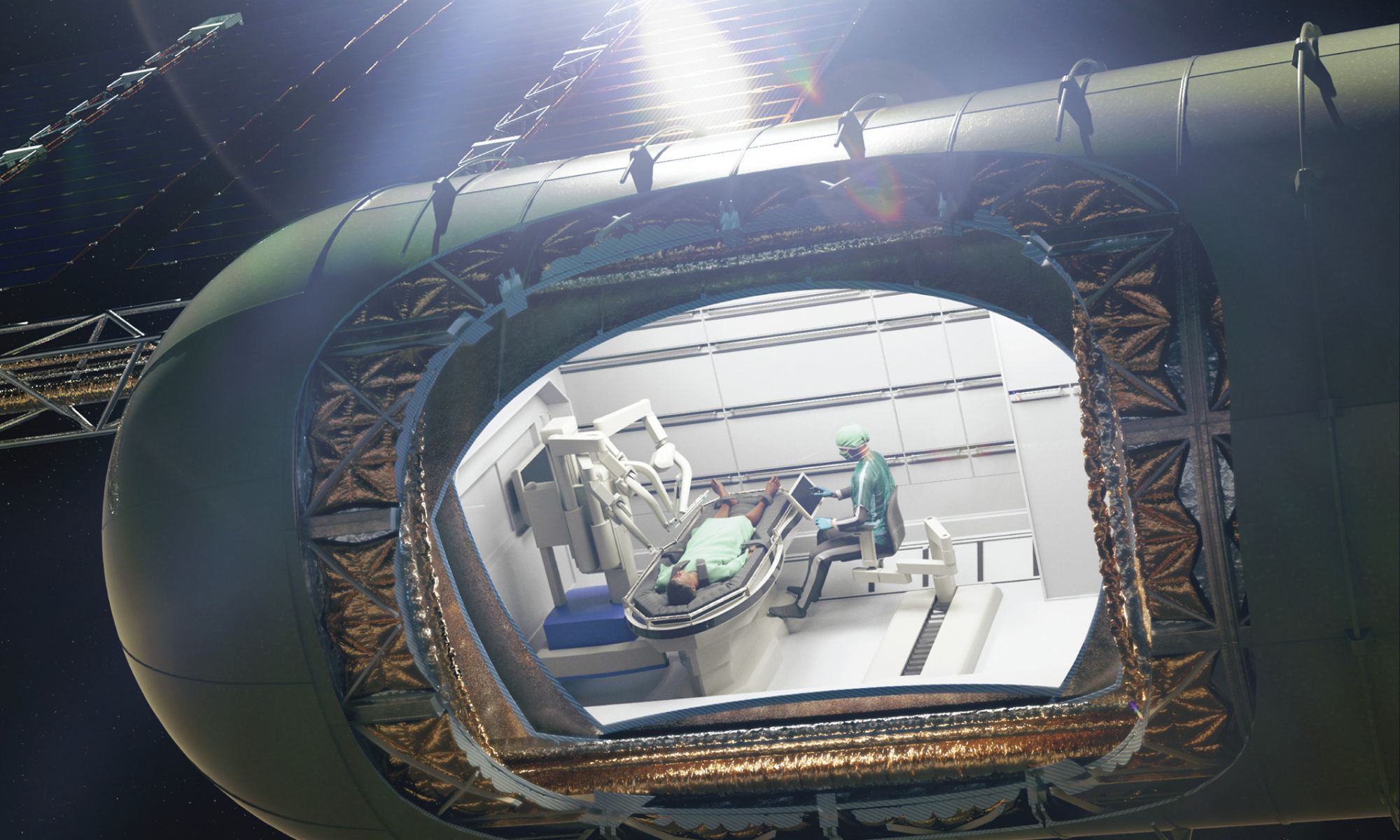Any mission to Mars requires deeper planning than missions to the ISS or the Moon. Based purely on the length of the mission, contingencies branch outwards in complex logistical pathways. What if there’s an accident? What if someone’s appendix bursts?
And what if surgery is needed?
There’s already been at least one close call.
Two months into a six month mission on the ISS, an unnamed astronaut got a blood clot. It was found as part of a study assessing the effect of microgravity on the jugular vein. The astronaut was able to do an ultrasound with help from specialists on the ground, and was instructed to take injections of a drug already available on the ISS. Over time, the blood clot shrank, and once the astronaut was back on Earth, the clot disappeared in only 24 hours.
In another instance, a Russian cosmonaut had to be returned to Earth quickly when it appeared they had appendicitis. Though that surgery is a relatively common occurrence on Earth, in space it’s a whole new ball game.
But what if? What if another ailment struck an astronaut? What if there’s an accident and surgery is necessary?
A 2018 study looked at some of the issues around surgery in space. The title is simply “Surgery in Space,” and the authors are Sandip Panesar from Stanford University and K. Ashkan, Professor of Neurosurgery at King’s College Hospital. The study was published in the British Journal of Surgery. Though that paper is a couple years old, it’s still relevant.

And more recently, Nina Louise Purvis wrote about the issue of space surgery in The Conversation. Purvis holds a Master’s degree in Astrophysics, a PhD in Medical Physics, and is currently doing research into Space Physiology at King’s College.
All of this attention to space surgery is in response to renewed interest in human space exploration. Human missions back to the Moon, and to Mars for the first time, are on the horizon. Most of the talk is about the technological challenges facing these missions. But the medical challenges are real, too.
The first thing to reckon with are the distances involved. A medical emergency on the ISS means stabilizing the patient with real-time assistance from specialists on the ground. Eventually, the patient could be returned to Earth.
Now jump to the Moon. Still, not so bad. If there’s some kind of habitation module, the patient could be stabilized, with more-or-less real-time assistance from specialists on Earth. A return to Earth would be more complicated, but there would be contingency plans.
Now, Mars.
The minimum distance between Mars and Earth is about 54.6 million km (31 million miles) away, and the maximum distance is about 401 million km (249 million miles). The average distance is about 225 million km (140 million miles). When a spacecraft is launched during the right window, it takes about six months to travel between Mars and Earth. In the event of a medical emergency, assistance from specialists on Earth could suffer from a communications latency of up to 20 minutes. And the trip back, if necessary, could take much longer than six months.

How can that be managed?
The distance isn’t the only problem. Constant radiation exposure is hazardous, too. But another over-arching problem is probably microgravity. Not only the chronic effects of microgravity over months or years, but the implications for performing surgery on a human body in little or no gravity.
The human body responds to microgravity by redistributing blood. Blood concentrates in the head, and other parts of the body have to compensate for this. There’s less blood in the cardiac and vascular systems. A number of other changes go along with this, and the result is a reduction in plasma volume and blood volume.
The body lowers its heart rate and blood pressure as a result. The body also becomes more susceptible to infections as a part of all this. Doesn’t sound ideal for someone undergoing emergency surgery.

“So in terms of fitness for surgery, an injured or unwell astronaut will be already at a physiological disadvantage,” Purvis wrote in her article.
A successful plan for medical emergencies in space has to take into account the likelihood of severe injuries requiring surgery. Research shows that a seven person crew will have an emergency requiring surgery every 2.4 years during a Mars mission. Researchers have also figured out what the most likely scenarios are: appendicitis, injury, gallbladder inflamation, and cancer. Even with the intense health screening that astronaut candidates undergo, these issues can crop up.
Astronauts have performed some surgeries on the ISS on rats. Those were important experiments that led to some basic improvements. But that’s just a rat.
Imagine opening a human body up in zero-gravity. The body of a crew-mate. “One problem was that, during open surgery, the intestines would float around, obscuring view of the surgical field,” Pervis wrote. The likely solution to that is keyhole surgery, where only a small incision is made. Tiny instruments and cameras would be deployed. But blood would still want to float out, and would need to be contained.
It’s fine to think of controlled keyhole surgery for something like appendicitis. But what about a traumatic accident? A screaming, writhing patient. Could they be put under general anaesthetic? That requires a specialist. What about blood pouring into the air, obscuring vision and creating an infection risk? What about blood sticking to instruments instead of dripping off.
It’s unpleasant to think about, but it’s real.
Which is why we need some kind of surgical pod.

Microgravity medical pods have already been researched by some. NASA itself spent some time looking at one surgical pod type of system; a closed system with a clear plastic dome. Arm ports in the canopy would allow people to treat a patient inside.
Robotic surgery is a thing, too.
Robot-assisted surgery is a potential partial solution to surgery in space. Robot surgeons are used in some heart surgeries, some thoracic surgeries, some gastrointestinal surgeries, and others. But these systems aren’t AI surgeons. They’re controlled remotely by a surgeon, which is not possible when it takes 20 minutes for a signal to get to Mars.

Another problem with surgery and medical care in space is supply. Space is always constrained on a spacecraft, and decisions have to be made carefully. How much medical equipment can be carried? The ISS has an on-board pharmacy, and it contains things like blood thinners, and syringes. But it can’t carry everything for any contingency.
Maybe everything doesn’t need to be carried, if 3D printers can help bridge the gap between what’s needed and what’s on hand.
It’s possible that 3D printers could be used to manufacture at least some types of medical supplies. Several studies have looked at that, including one conducted during a simulated 4 month Earth-analog mission to Mars. In that scenario, crew-members with no surgical experience successfully “completed 16 timed sets of simulated prepping, draping, incising, and suturing tasks to evaluate the relative speed of using four ABS thermoplastic instruments printed on Earth compared to conventional instruments.”
While those findings were limited, they at least show some of the potential for the 3D printing of surgical eqipment on demand. It’s even possible that some equipment could be 3D printed with in-situ resources on Mars, though that’s a long way off.
Everything about a space mission is tightly budgeted. It’s not possible to take specialized crew members with surgical skills, and equipment, for every contingency. But the problem is real, and there’s an increasing interest in studying the problem.
Access to medical care is critical in trauma, obviously. In the United States, rural trauma mortality is up to 50% greater than in urban settings, due to access to care.

Every accident can’t be prevented, and every patient can’t be saved, but each crew member on a Mars mission is critical to the mission. Losing one crew member, either to death or incapacitation, could mean the mission fails to meet its objectives. One incapacitated crew member could put the rest of the crew at increased risk, too.
“There is a wealth of research and preparation for the possible event of a surgical emergency during a Mars mission,” Purvis writes in the end of her article, “but there are many unknowns, especially when it comes to diagnostics and anaesthesia.”
While we wait for better solutions to these problems, Purvis points to prevention as the primary tool. “Ultimately, prevention is better than surgery,” Purvis writes. “So selecting healthy crew and developing the engineering solutions needed to protect them will be crucial.”
If astronaut screening isn’t already vigorous, expect it to be even more severe when it’s time for a mission to Mars.
More:
- Research Paper: Surgery in Space
- The Conversation: From floating guts to ‘sticky’ blood – here’s how to do surgery in space
- Research Paper: Severe traumatic injury during long duration spaceflight: Light years beyond ATLS
- Research Paper: Emergencies in Space


The primary problem has a simple solution (but perhaps difficult in implementation) and that is artificial gravity. I’ve been advocating true interplanetary space travel from the time I watched the original sputnik and gemini programs. Even then and assuredly before, artificial gravity was ubiquitous in the designs. Until we can do that properly send robots. We are just killing people unnecessarily.